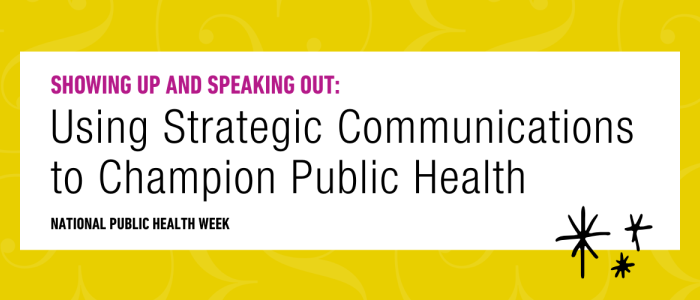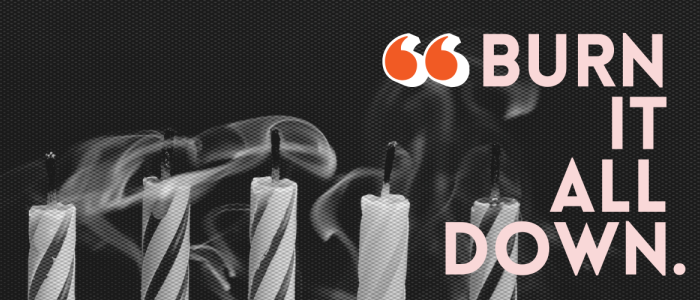
Maintaining a work-life integration this holiday season
By: Zoe Howard
Nov 18, 2020
Category: P&G culture
At P&G, we are constantly finding ways to fit a healthy work-life integration into our culture. Now that we have fully transitioned into a WFH structure, the boundaries between work and personal life may be starting to blur. I think it’s safe to say we have all experienced some major pushbacks one way or another this year (2020, am I right?), but how do we maintain a healthy lifestyle moving into the holiday season without losing our minds?
Fortunately, a work-life integration is possible. I had the opportunity to dive deeper into researching what experts recommend we can do to achieve some balance and peace this season. We can break it down into five basic areas:
Prioritization: Identify the essentials.
Did you know there are actually methods to prioritizing (*big exhale*)? I’ve found a visualization practice makes my overwhelming to-do list significantly more approachable by helping me identify what needs to be done and what can wait. We can’t be superwomen all the time, after all. Tools like the Eisenhower Matrix allow us to categorize our tasks using specific criteria: important/unimportant and urgent/not urgent. Putting tasks in these quadrants helps visualize and execute in a way that is manageable.
A bonus visualization method from author Nora Roberts: juggling. The key to juggling is knowing that some balls you have in the air are made of plastic and some made of glass. And if you drop a plastic ball, it bounces — no harm done. If you drop a glass ball, it shatters, so you have to know which balls are glass and which are plastic and prioritize catching those ones.
Sometimes a plastic ball can be kid or family stuff; sometimes work deadlines can be glass. Sometimes to catch a glass work ball you have to drop a plastic family one, and that’s OK. If you’re juggling 55 balls, some are going to drop, so rather than focusing on broad categories, you focus on the glass balls. It’s hard to drop any ball, but the plastic ones can be picked up when you’re ready.
Improving efficiency: Limiting distractions.
Back in my interning days, flipping the switch between classes and work was HARD. It affected my performance in both areas, and it was just all-around tiring to get my brain to focus on what’s in front of me. With some help from our founder, Kate Snyder, I was introduced to the Pomodoro technique. It goes like this:
-
Set a timer for 25 minutes, and work on what needs your attention with NO distractions during that time.
-
Once that time is up, take a 3-5 minute break. Your break could include scrolling through social media, answering emails or refreshing your coffee.
-
Repeat each time segment (aka pomodoros) four times, and increase your break time to 15-30 minutes after four rounds.
Within the first hour of trying this method it was already easier to write! The magic behind it is the frequent short breaks that promote sustained concentration and reduce mental fatigue.
Add flexibility: Is your “ideal” work day feasible?
Keeping a flexible mindset helps us set reasonable goals because, if you’re anything like me, your ideal work day may look more like “less work, more play.” Understand there are many factors that will help us approach actual work-life integration. For example, adding a work-out routine at home is a great start to self-care, but it’s not going to solve the problem of overworking. We need to look at balance in a balanced way! Take a look at this pie chart. There are multiple things to keep in mind when creating a work-life ratio that is sustainable, and we have to attend all of the areas (at least eight areas!). Although it may seem daunting, starting small can help us tackle this. Identify what areas in your life need major attention first, and you can gradually add these other factors in. A balanced life does not mean dramatic upheaval, it’s the small things that matter!
Time for yourself.
Set. Those. Boundaries. And enforce them. If you want to dedicate your weekend to yourself or family, then do that! Communicate with your work team you are unavailable outside of specific hours if that’s what needs to be done. People are juggling kids’ online school schedules, child care, coordinating schedules with partners or roommates to manage kids or have solid internet access, and on and on… For many of us, our hours look different than they used to. It may take 45 distracted hours to get 35 hours worth of work done. We may have to work in the evenings or weekends to compensate for home schooling or getting in critical Vitamin D during the daylight hours. But you don’t HAVE to maintain those evening and weekend hours EVERY day. When you need a break, it’s okay to ask for a break, or demand it if that’s what it takes. It may seem like a rocky conversation at first, but don’t get pressured into breaking those boundaries. Even for those in a position to maintain a more steady 9 to 5, it can seem like squeezing in a few hours outside of normal working time isn’t a big deal, but it’s a slippery slope. Establishing boundaries can help ease the pressure of navigating these hectic changes many households are facing, and help us find a sliver of time we can get back to ourselves.
Enjoy what you do: It’s up to you (sort of)!
Some helpful advice I received from my dad, aka someone who has a lot of time to find his ideal work-life integration:
“You can’t live for work. Life connections are more important than any job, and it’s important to find a workplace that will honor that.”
But some jobs and careers pose a challenge for us to stay meaningfully engaged with our personal lives. As many communities are going back into lock down we have to remember to give ourselves some grace and flexibility, but also to strive to find ways to actually enjoy the work we do.
Now, this is where it’s important to keep our perspective and recognize not all opportunities are created equal. Privilege exists. It would be naive to simply say, “You are in complete control of your career future.” Gender, race, education access, geography, hell, the way we look… they all impact people in their job search and access to quality careers and pay. And speaking of naivety, I’m not naive enough to think I’m going to solve these inequities in a single blog post about work-life balance. But it’s important to recognize it as we really think about who the solutions I’m talking about work for. I know it’s more complex than a few hundred words can express, so if you’re one of the people who does have a job right now and is financially able, donate to the ACLU to help keep fighting the fight for overarching equity in the workplace and beyond.
And if you’re one of those in a position of privilege to have elements you CAN control, try. A healthy work-life integration does not require dramatic upheaval. With small-scale changes in the right places, many of us can start to transform the quality of our day-to-day lives and find some solutions for balance that can last well-beyond the dumpster fire that is 2020.




